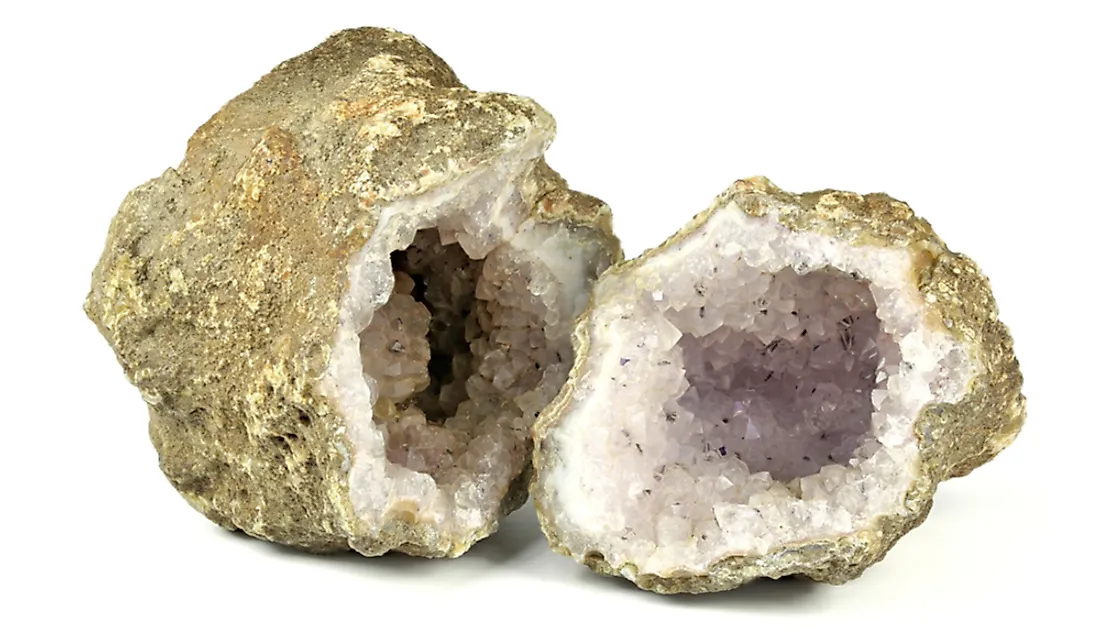What Is A Geode?

A geode is a Greek word that means the shape of the earth. The name originates from their shape, which is earthlike or oblong (like the shape of an egg). Geodes are consequently defined as secondary structures that are usually found in specific volcanic and sedimentary rocks. Volcanic rocks are known to occur due to the eruption of magma from volcanic mountains, and that is why they are generally referred to as volcanics. On the other hand, sedimentary rocks are formed from the sedimentation of the earth’s materials that are found within water bodies. Therefore, geodes can be said to be originating from the sedimentary rocks and are formed because of chemical precipitation. Geodes can be found in most places of the world; however, they are heavily concentrated in deserts.
Structure of Geodes
These rocks are ordinarily hollow and spherical. The geodes are also characterized by a chalcedony shell that is internally lined by crystals, pyrite, sphalerite, barite, dolomite, and quartz among other minerals. These rocks are mostly found in basaltic limestone and lavas. The structure of this rock can also be easily differentiated from that of nodules in that the latter is an irregularly rounded knot. Although the two rocks have different structures, they both contain minerals that have been deposited from the hydrothermal process or underground water.
How Are Geodes Formed?
The geodes are said to be formed in any hollow or cavity like areas such as in tree roots or animal burrows. However, the most common formation of these rocks is through bubbles in the volcanic rocks. They can also be formed in the gas bubbles in igneous rocks. Igneous rocks are also sometimes referred to as the magmatic rock. This type of rock is generally established via the cooling and solidification of lava or magma. Since the igneous rocks are hollow, the minerals that are found within them get their way into the hollow part filling it. These minerals harden forming the outer shell of the geode.
Geode Colors
The space found within the geode rock may take millions of years to be filled, and that is the main reason why most of the geodes are mostly seen being either completely hollow or partially hollow. Minerals may continue forming inside the shell of the geodes and even spread towards the center of these rocks. If this rock is cut into two halves, one can observe the various stages of precipitation that reveals how the multiple fluids entered into the cavity. The different colors perceived in this rock result from the changes in chemistry experienced during the formation of the rock. The color of these rocks can also be defined by the kind of crystal that led to its composition. For instance, geodes from amethyst crystal tend to be purple.











